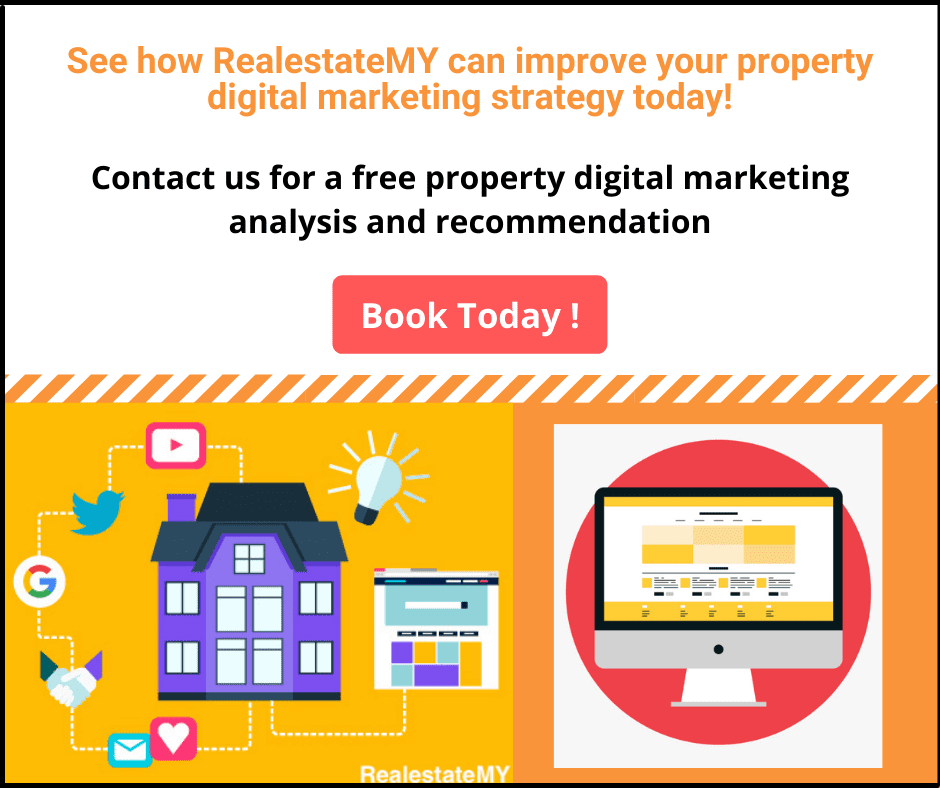Conversion Focused Copywriting For Websites
Table of Contents
In the fast-paced world of real estate, where competition is fierce, capturing the attention of potential buyers can mean life or death of your business. Conversion-focused copywriting is a crucial component for real estate lead generation campaigns generating sales. A well-written copy can not only attract potential buyers, but also persuade them to take action and convert into sales leads.
An effective real estate website requires more than just attractive visuals and user-friendly design. It demands the right copywriting that inspires prospects to action and drives leads. Today, we’ll explore key strategies and techniques to help you craft compelling and persuasive copy that converts visitors into loyal clients.
Download Now: Real Estate Content Marketing Guide [Free Access]
Know Your Target Audience
Writing compelling real estate copy for your website goes far beyond just listing features and amenities; it’s about connecting with your audience on a deeper, more personal level. Before you start drafting that catchy headline or descriptive paragraph, it’s crucial to immerse yourself in the world of your target audience. Who are they? What’s their age group, income level, family size, or lifestyle? Understanding these demographic factors provides a foundation for your messaging, but diving into their preferences and motivations is where the real magic happens.
Take the time to explore what truly matters to them. Are they first-time homebuyers seeking guidance and assurance? Maybe they’re growing families looking for more space and community amenities, or perhaps retirees downsizing for a more comfortable lifestyle. Each group has unique pain points and aspirations. A young couple might prioritise proximity to urban amenities and work, while a retiree may value peace, quiet, and security.
Craft an Engaging Headline
The headline on your property website acts as the digital front door to your brand and offerings. In a world where attention spans are short and competition is fierce, your headline has a vital job: to stop visitors in their digital tracks and draw them into the narrative of your brand. It’s not just about being catchy; it’s about being compelling and evocative. To craft such a headline, start by integrating power words – those emotionally charged words that can trigger a response from the reader. These could be words like ‘luxurious’, ‘exclusive’, ‘serene’, or ‘state-of-the-art’, depending on what aligns best with your property’s characteristics and your target audience.
In addition to power words, your headline should spark curiosity. It should pose a subtle invitation to the reader to discover more. Phrases that hint at a story or a unique experience can be very effective. For instance, “Discover Elegance Redefined at [Property Name]” or “Experience Urban Oasis Living in the Heart of [Location]”. Such headlines do more than just inform; they tantalize and intrigue.
Create Benefit-Driven Content
When you’re crafting real estate copy, it’s crucial to shift the focus from just the physical features of a property to the tangible benefits these features bring to your clients’ lives. It’s about painting a picture that moves beyond square footage and amenities to how these aspects translate into a better, more fulfilling lifestyle for the buyer. For instance, instead of simply stating that a property has a large kitchen, emphasize how this space is perfect for hosting memorable family gatherings or experimenting with gourmet recipes. It’s about connecting the feature to a meaningful experience or a cherished dream.
Delve into how specific aspects of the property can save time or reduce stress for your clients. A location with easy access to public transport, for instance, isn’t just a convenience; it’s hours saved from commuting, more time for family, or leisure. Similarly, highlighting energy-efficient features isn’t just about being eco-friendly; it’s about offering long-term financial savings and a sense of contributing to a greener planet.
Utilise Persuasive Calls-to-Action (CTAs)
In the realm of real estate marketing, crafting effective copy is only part of the equation. To turn readers into leads and prospects into clients, your copy must include strong, clear calls-to-action (CTAs). These CTAs are the signposts that guide visitors on what to do next, nudging them further down the path to engagement with your services. For instance, instead of a vague “Learn More”, a more direct CTA like “Schedule Your Exclusive Property Tour Today” or “Contact Us Now for a Free Consultation” is much more effective. It’s about being specific and action-oriented, leaving no room for ambiguity about what step the visitor should take next.
Moreover, your CTAs should convey a sense of urgency and exclusivity. Phrases like “Limited Time Offer”, “Schedule Before It’s Gone”, or “Join Our Exclusive Mailing List Now” create a feeling of scarcity and timeliness, encouraging an immediate response. This sense of urgency taps into the fear of missing out (FOMO), a powerful motivator in decision-making.
Incorporate Social Proof
In the world of real estate, where transactions are not only significant but also deeply personal, the power of social proof cannot be overstated. Buyers and sellers are often navigating one of the biggest decisions of their lives, and they look for every reassurance that they are making the right choice. By incorporating elements like testimonials, success stories, and client reviews into your marketing, you provide that much-needed assurance, directly from those who have already experienced your services.
Testimonials from satisfied clients serve as powerful endorsements. They are real-life success stories that resonate with potential clients. For instance, a testimonial from a first-time homebuyer who praises your guidance and support can be incredibly reassuring to others in the same situation. These personal accounts go beyond just promoting your services; they connect on an emotional level, building trust and humanising your brand.
Optimise for Search Engines
The key to truly making your mark and reaching potential clients is through effective Search Engine Optimization (SEO). SEO is the art and science of making your website more visible and attractive to search engines like Google. This means when someone searches for real estate services or properties in your area, your website shows up higher in the search results, increasing the likelihood of a visit.
To achieve this, start by researching and identifying relevant keywords that your target audience is likely to use when searching for properties or real estate services. Tools like Google Keyword Planner or SEMrush can be incredibly helpful in this research. Once you have a list of effective keywords, the challenge is to incorporate them into your website’s content naturally. Overuse or forced insertion of keywords can detract from the readability of your content and may be penalised by search engines.
Keep It Clear & Concise
Visitors often skim through webpages, seeking specific information without wanting to wade through dense blocks of text. To cater to this behavior, it’s essential to keep your website copy clean, concise, and easily digestible.
Start by avoiding lengthy paragraphs and complex real estate jargon that might be confusing or off-putting to the average reader. Instead, opt for clear, straightforward language that speaks directly to your audience’s needs and questions. This approach not only makes your content more accessible but also helps in building a connection with potential clients by using language they understand and relate to.
Leverage Visuals & Multimedia
Videos and virtual tours take this a step further by offering an immersive experience. They allow potential buyers to ‘walk through’ a property from the comfort of their own home, providing a sense of layout, size, and flow that static images cannot. This can be particularly compelling for out-of-town buyers or for properties with unique features that are best experienced visually.
Interactive elements, like 360-degree views and interactive maps, add an additional layer of engagement. They not only assist in visualising the property but also provide valuable context about the surrounding area. For instance, interactive maps can highlight nearby amenities, schools, or transport links, offering a comprehensive overview of the property’s location in a user-friendly format.
Conclusion
Conversion-focused copywriting is a powerful tool in your real estate marketing arsenal. By understanding your audience, crafting compelling headlines and benefit-driven content, utilising persuasive CTAs, incorporating social proof, optimising for search engines, maintaining clarity and conciseness, and leveraging visual elements, you can elevate your real estate website and drive conversions. Implement these strategies and watch your website become a lead-generating powerhouse, attracting clients and fueling your success in the competitive real estate industry.
Stay tuned with the realestatemy.com/blog for more up-to-date tips and guides for real estate marketing professionals.











